
The saxophone is a type of single-reed woodwind instrument with a conical body, usually made of brass. As with all single-reed instruments, sound is produced when a reed on a mouthpiece vibrates to produce a sound wave inside the instrument's body. The pitch is controlled by opening and closing holes in the body to change the effective length of the tube. The holes are closed by leather pads attached to keys operated by the player. Saxophones are made in various sizes and are almost always treated as transposing instruments. A person who plays the saxophone is called a saxophonist or saxist.
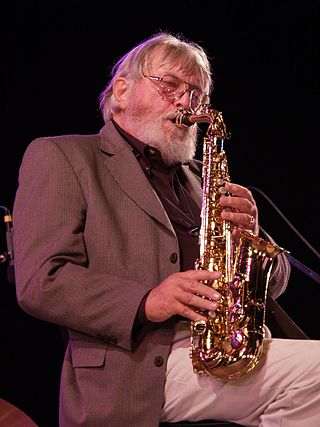
Clifford Everett "Bud" Shank Jr. was an American alto saxophonist and flautist. He rose to prominence in the early 1950s playing lead alto and flute in Stan Kenton's Innovations in Modern Music Orchestra and throughout the decade worked in various small jazz combos. He spent the 1960s as a first-call studio musician in Hollywood. In the 1970s and 1980s, he performed regularly with the L. A. Four. Shank ultimately abandoned the flute to focus exclusively on playing jazz on the alto saxophone. He also recorded on tenor and baritone sax. His most famous recording is probably the version of "Harlem Nocturne" used as the theme song in Mickey Spillane's Mike Hammer. He is also well known for the alto flute solo on the song "California Dreamin'" recorded by The Mamas & the Papas in 1965.
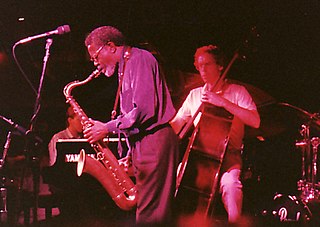
Joe Henderson was an American jazz tenor saxophonist. In a career spanning more than four decades, Henderson played with many of the leading American players of his day and recorded for several prominent labels, including Blue Note, Milestone, and Verve.
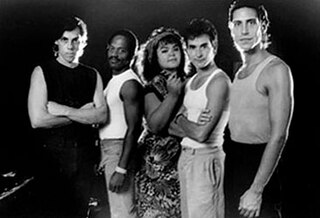
Romeo Void was an American new wave/post punk band from San Francisco, California, formed in 1979. The band primarily consisted of saxophonist Benjamin Bossi, vocalist Debora Iyall, guitarist Peter Woods, and bassist Frank Zincavage. The band went through four drummers, starting with Jay Derrah and ending with Aaron Smith. The band released three albums, It's a Condition, Benefactor and Instincts, along with one EP. They are best known for the songs "Never Say Never" and "A Girl in Trouble "; the latter became a Top 40 pop single.

Arthur Edward Pepper Jr. was an American jazz musician, most known as an alto saxophonist. He occasionally performed and recorded on tenor saxophone, clarinet and bass clarinet. Active primarily in West Coast jazz, Pepper first came to prominence in Stan Kenton's big band. He was known for his emotionally charged performances and several stylistic shifts throughout his career, and was described by critic Scott Yanow as having "attained his goal of becoming the world's greatest altoist" at the time of his death in 1982.

Harold de Vance Land was an American hard bop and post-bop tenor saxophonist. Land developed his hard bop playing with the Max Roach/Clifford Brown band into a personal, modern style, often rivalling Clifford Brown's instrumental ability with his own inventive and whimsical solos. His tone was strong and emotional, yet hinted at a certain introspective fragility.
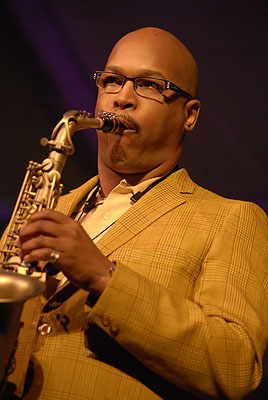
Greg Osby is an American saxophonist and composer.

Thomas Wright Scott is an American saxophonist, composer, and arranger. He was a member of The Blues Brothers and led the jazz fusion group L.A. Express.

Steve Mackay was an American tenor saxophonist best known for his membership in the Stooges. His performances are showcased on three songs on the band's second album, Fun House (1970).

"Never Say Never" is a 1982 song by the new wave band Romeo Void. One of their best-known songs, "Never Say Never" was a favorite on early MTV, featuring a black-and-white music video that spoofs Jean-Luc Godard's Breathless. The song is driven by a throbbing, funky bassline and punctuated by jagged guitar and saxophone, incorporating post-punk influences. The song reached #27 on the Mainstream Rock songs chart in October 1982.

Benefactor is the second studio album by American new wave band Romeo Void, released in 1982. It was released on CD in 2006 by Wounded Bird Records, with their Never Say Never EP as four bonus tracks. The version of the song "Never Say Never" is a shorter, "clean" edit suitable for general radio broadcast.

Instincts is the third and final studio album by the American band Romeo Void. It was released in 1984 on Columbia Records. The single "A Girl in Trouble " reached No. 35 on the Billboard Hot 100 singles chart. The album was produced by David Kahne.

David Van Kriedt was a composer, saxophonist and music teacher.
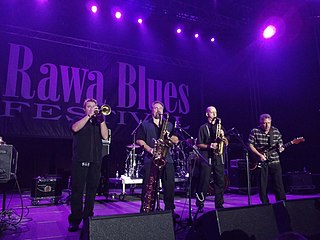
Roomful of Blues is an American jump blues and swing revival big band based in Rhode Island. With a recording career that spans over 50 years, they have toured worldwide and recorded many albums. Roomful of Blues, according to the Chicago Sun-Times, "Swagger, sway and swing with energy and precision". Since 1967, the group’s blend of swing, rock and roll, jump blues, boogie-woogie and soul has earned it five Grammy Award nominations and many other accolades, including seven Blues Music Awards. Billboard called the band "a tour de force of horn-fried blues…Roomful is so tight and so right." The Down Beat International Critics Poll has twice selected Roomful of Blues as Best Blues Band.

It's a Condition is the first studio album by American new wave band Romeo Void, released in 1981. It was released on CD by Wounded Bird Records, together with Strange Language, Debora Iyall's 1986 solo album, in July 2007, and digitally in 2011. The cover artwork was by Debora Iyall.

Fredrik Lundin is a Danish jazz saxophonist, composer and bandleader. Having founded his first jazz quartet in 1981, he has become one of the most expressive saxophonists in Danish jazz and also one of the most prolific ones.
Timothy M. Ries is an American saxophonist, composer, arranger, band leader, and music educator at the collegiate/conservatory level. Ries is in his seventeenth year as a professor of jazz studies at the University of Toronto. His universe of work as composer, arranger, and instrumentalist ranges from rock to jazz to classical to experimental to ethno to fusions of respective genres thereof. His notable works with wide popularity include The Rolling Stones Project, a culmination of jazz arrangements of music by the Rolling Stones produced on two albums, the first in 2005 and the second in 2008.

David "Chase" Baird is an American saxophonist and composer.
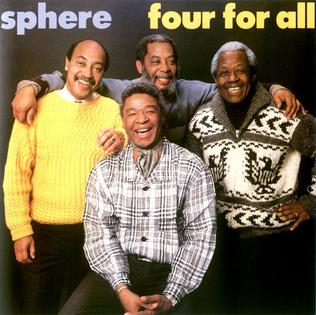
Four for All is an album by the group Sphere featuring saxophonist Charlie Rouse, pianist Kenny Barron, bassist Buster Williams, and drummer Ben Riley which was recorded in 1983 and released on the Verve label.

Strange Language is the debut solo studio album by Cowlitz Native American singer Debora Iyall, released by Columbia in 1986 and produced by Pat Irwin. The album was given its first CD release by Wounded Bird Records in 2007.



















